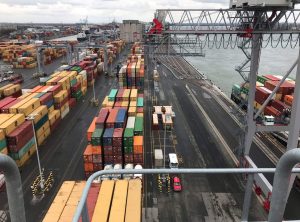Early indications suggest ocean freight shipping rates are set to increase further in early February due to the ongoing Red Sea crisis, according to latest data released by the Xeneta ocean freight rate benchmarking platform.
The platform’s projections are based on over 400 million data points and rates provided by customers for the first week of February.
While the situation remains volatile and subject to change, the newly-released data is the best indication of where the market is headed, Xenata said.
Far East to Mediterranean market average short term rates are set to increase 11% by 2 February to stand at USD 6507 per FEU. This represents an increase of 243% since the Red Sea crisis escalated in mid December as Houthi rebels in Yemen attacked merchant shipping.
Far East to North Europe are set to rise 8% by 2 February to USD 5106 per FEU. This represents an increase of 235% since mid December.
Far East into US East Coast is set to increase 17% by 2 February to USD 6119 per FEU. This is an increase of 146% since mid December.
“Carriers are trying to readjust services to make up for the additional sailing time around the Cape of Good Hope. For example, they are cutting journeys short, missing port calls and increasing sailing speed,” said Peter Sand, Xeneta Chief Analyst. “However, despite this, the early data from Xeneta suggests rates will continue to rise as we head into February.”
Although the market is expected to continue rising, there are early signs of factors that could lead to a decrease in rates post the Lunar New Year peak.
Mr. Sand noted that the Red Sea crisis had resulted in a capacity problem rather than a demand issue, creating a significant market imbalance. “This may suggest there is a waning demand for this level of service because the urgency is fading from the shipper side, or perhaps it is because capacity is available after all, despite the chaos caused by carriers pausing transits through the Suez Canal.”
(Image from Houthi Military Media)








